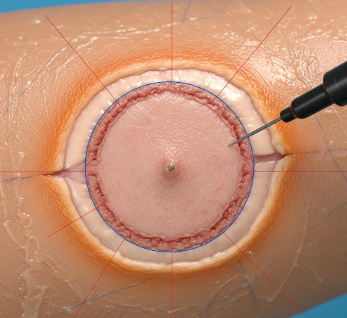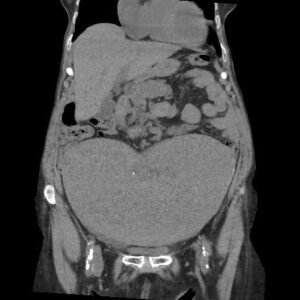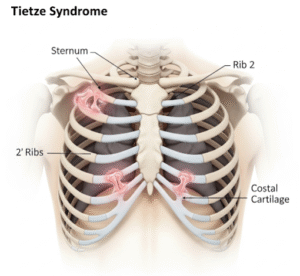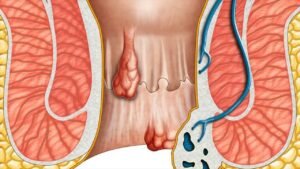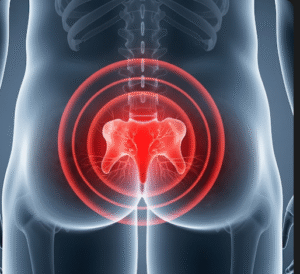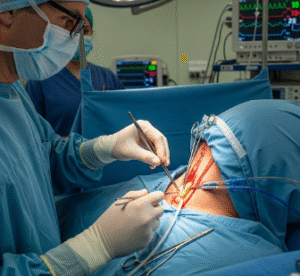Overview
Wide Local Excision (WLE) is a surgical procedure used to remove a tumor along with a margin of surrounding healthy tissue to ensure complete excision. This technique is commonly employed in skin cancers, breast tumors, and soft tissue malignancies, aiming to reduce recurrence risk while preserving function and appearance.
South Korea is a leading destination for advanced surgical oncology, offering precision-guided WLE with experienced surgeons, state-of-the-art operating theaters, and comprehensive postoperative care. Patients benefit from high success rates, minimal complications, and tailored recovery plans.
WLE is typically recommended for patients who:
- ➤ Have benign or malignant skin lesions requiring complete removal
- ➤ Present with early-stage breast tumors suitable for breast-conserving surgery
- ➤ Require tumor removal with oncologically safe margins
- ➤ Seek minimally invasive, cosmetically favorable surgery
What is Wide Local Excision?
Wide Local Excision involves surgically removing a tumor along with a margin of normal tissue to ensure no residual cancer cells remain.
Key features of WLE:
- ➤ Performed for cutaneous, breast, soft tissue, and some gastrointestinal tumors
- ➤ Aims to achieve clear margins, minimizing the chance of recurrence
- ➤ Can be combined with reconstructive procedures to optimize cosmetic or functional outcomes
- ➤ May involve sentinel lymph node biopsy if malignancy risk is high
Korean hospitals specialize in precision-guided WLE using modern imaging, intraoperative margin assessment, and reconstructive techniques.
What are the Benefits?
✔ Complete removal of tumor with oncologically safe margins
✔ Reduces recurrence risk and need for re-excision
✔ Preserves function and appearance of the affected area
✔ Can be performed as an outpatient or short hospital stay procedure
✔ Korean surgical centers provide advanced imaging and intraoperative pathology for real-time assessment
Additional benefits include:
- ➤ Minimally invasive approaches reduce postoperative pain and scarring
- ➤ Early intervention improves long-term survival and outcomes
- ➤ Customizable excision margins based on tumor type, size, and location
- ➤ Multidisciplinary approach with oncology, pathology, and reconstructive teams
Procedure Details:
1) How should I prepare for Wide Local Excision?
- ● Preoperative evaluation: Physical exam, imaging (ultrasound, MRI, or CT), and biopsy to confirm tumor type
- ● Medical history: Review chronic conditions, medications, allergies, and prior surgeries
- ● Medication adjustments: Blood thinners may need to be paused
- ● Fasting: Required if general anesthesia will be used
- ● Skin preparation: Area cleaned and shaved as needed
- ● Korean hospitals: Provide detailed preoperative counseling, multilingual support, and personalized surgical planning
2) What happens during the procedure Wide Local Excision?
- ➤ Anesthesia: Local or general anesthesia depending on tumor size and location
- ➤ Surgical steps:
- Incision made around tumor with a predefined margin of healthy tissue
- Tumor and surrounding tissue carefully excised
- Intraoperative assessment may include frozen section analysis to confirm clear margins
- Wound closed directly or reconstructed using skin flaps, grafts, or local tissue rearrangement
- ➤ Duration: Usually 1–3 hours depending on tumor complexity and reconstruction
- ➤ Korean advantage: Surgeons employ advanced intraoperative imaging, precise excision, and reconstructive expertise to optimize outcomes
3) What happens after Wide Local Excision?
- ● Hospital stay: Outpatient or 1–2 days depending on complexity
- ● Pain management: Oral analgesics; mild discomfort expected
- ● ● Wound care: Keep surgical site clean and dry; follow specific dressing instructions
- ● Activity: Limited activity for 1–2 weeks; avoid strenuous activity until cleared by surgeon
- ● Follow-up:
- Sutures removed in 1–2 weeks (if non-absorbable)
- Pathology review of excised tissue to confirm clear margins
- Regular monitoring for recurrence or complications
- ● Korean hospitals: Provide structured postoperative care, physiotherapy if needed, and multidisciplinary follow-up
Risks / Benefits
✔ Benefits:
- ✦ Complete tumor removal with clear margins
- ✦ Reduces recurrence and improves long-term outcomes
- ✦ Preserves function and appearance with reconstructive options
- ✦ Minimally invasive techniques reduce pain and scarring
⚠ Possible Risks (rare):
- ➔ Infection at the surgical site
- ➔ Bleeding or hematoma formation
- ➔ Delayed wound healing
- ➔ Scar formation or cosmetic concerns
- ➔ Nerve injury causing temporary or permanent sensory changes
- ➔ Need for additional surgery if margins are not clear
Recovery and Outlook
- ➤ Immediate recovery: Most patients experience mild pain and swelling; controlled with medication
- ➤ Activity: Light activity immediately; avoid strenuous work for 1–2 weeks
- ➤ Wound healing: Typically 2–4 weeks; cosmetic or functional recovery depends on reconstruction
- ➤ Long-term outlook: High success rate in achieving tumor-free margins; significantly lowers recurrence risk
- ➤ Korean advantage: Advanced surgical techniques, intraoperative pathology, and post-op monitoring optimize outcomes and patient satisfaction
When To Call the Doctor
Patients should contact their doctor if they notice:
- ⚠ Excessive bleeding or swelling
- ⚠ Redness, warmth, or signs of infection
- ⚠ Severe pain not relieved by medication
- ⚠ Wound dehiscence or separation
- ⚠ Recurrence or new lesions in the treated area
Best Korea Option / Process
South Korea is a global leader for Wide Local Excision procedures due to:
- 🌟 Highly skilled surgical oncologists and reconstructive surgeons
- 🌟 State-of-the-art operating rooms and imaging facilities
- 🌟 Precision-guided excision with real-time margin assessment
- 🌟 Comprehensive postoperative care and follow-up
- 🌟 Multilingual support for international patients seeking safe and effective tumor removal
Top Korean Hospitals for Wide Local Excision:
- ✅ Seoul National University Hospital (Surgical Oncology Dept.)
- ✅ Asan Medical Center
- ✅ Samsung Medical Center
- ✅ Severance Hospital (Yonsei University)
- ✅ Bundang CHA Hospital (Advanced Oncology Center)
✅ Quick Highlights Recap
- ➤ Surgical removal of tumor with a margin of healthy tissue
- ➤ Minimally invasive with oncologically safe outcomes
- ➤ Reconstruction available to preserve function and appearance
- ➤ Rare risks, mostly manageable with expert care
- ➤ Korean hospitals provide precision-guided surgery, expert oncology teams, and comprehensive post-op care

